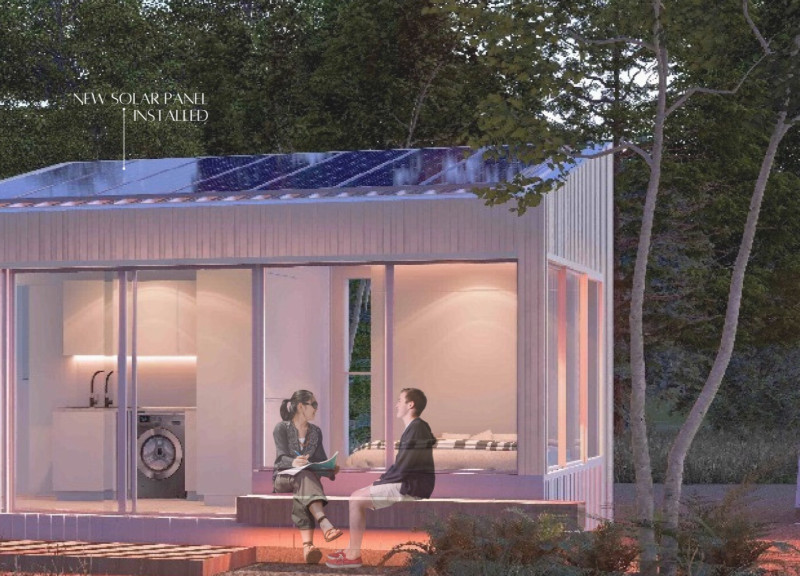5 key facts about this project
Designed primarily for [describe primary function or intended use—e.g., residential, commercial, cultural], the building reflects its purpose through careful attention to spatial organization and user experience. Each area within the structure serves a specific role, whether it be for communal gatherings, private activities, or quiet contemplation. The thoughtful arrangement of spaces promotes interaction while also providing privacy where necessary, illustrating a comprehensive understanding of human behavior and social dynamics.
A significant aspect of this project is its emphasis on materiality. The architecture employs a carefully curated selection of materials that emphasizes durability and sustainability. Concrete forms the backbone of the structure, providing the strength required for its design while also enabling a versatile expression of shape and volume. Large glass panels strategically integrated into the facade enhance the visual clarity and connectivity to the environment, allowing ample natural light to permeate interior spaces. Wood accents bring warmth and texture, fostering a sense of comfort and inviting users to engage with the space on a more intimate level. The incorporation of these materials not only addresses practical concerns but also echoes the local architectural vernacular, connecting the building to its geographic and cultural context.
Unique design approaches are evident throughout the project. For instance, the integration of sustainable design features such as green roofs and rainwater harvesting reflect a commitment to environmental responsibility. The design incorporates passive heating and cooling strategies, maximizing energy efficiency and reducing the overall ecological footprint of the building. These elements are seamlessly woven into the architectural fabric, making sustainability a natural part of the building’s identity rather than an afterthought.
The exterior of the project captures attention with its harmonious proportions and careful detailing, showcasing a refined balance between solid and void. The interplay between different materials highlights the architect's intention to create a harmonious dialogue between the built form and the natural landscape. Landscaping elements complement the architecture, creating a cohesive environment that encourages outdoor interaction and enhances the overall user experience.
Inside, the project continues to reflect thoughtful design. High ceilings and open spaces contribute to a sense of airiness, while carefully placed windows frame views of the surrounding landscape, fostering a connection with nature. Each interior space has been designed with both functionality and comfort in mind, featuring flexible configurations that can adapt to a variety of uses. The use of color and texture throughout the interiors is subtle yet effective, providing an inviting atmosphere that caters to the diverse needs of its users.
In summary, the architectural project in [Location] represents a significant contribution to contemporary design. Through its dedication to materiality, sustainability, and user-oriented spaces, it engages thoughtfully with its environment while meeting the needs of its community. The unique design approaches employed throughout the project serve as a testament to its architectural integrity and vision. For further details, readers are encouraged to explore the project presentation, including architectural plans, architectural sections, and architectural ideas that illustrate the depth and creativity of this compelling design.


























